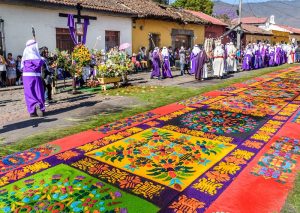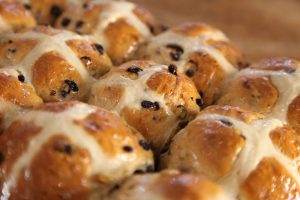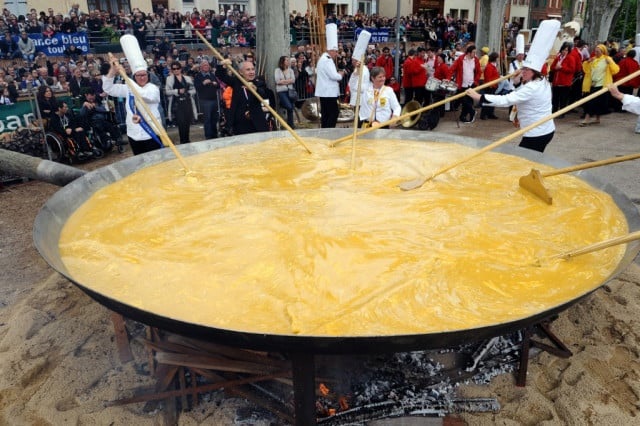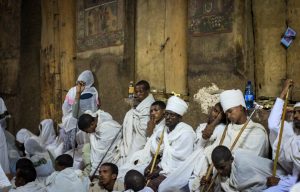Easter, a popular Christian holiday commemorated this weekend, celebrates the resurrection of Jesus Christ after his crucifixion by Roman soldiers.
It is also a time when Christians ponder on the sacrifice made by Christ to pay for the sins of humanity and how his resurrection reflects on our own earthly lives and the possibility of having hope in this life and in eternity.
Apart from its biblical and spiritual significance, Easter has become a worldwide tradition celebrated in many ways.
France
If you were to spend Easter in France, a major tradition there is the ringing of Easter church bells called the ‘Les cloches’ which date back to the 7th century. The church bells are silent during the holy week before Easter as a sign of grievance but start ringing on the night of Easter Sunday to celebrate the resurrection of Jesus. To hype the children up, once the bells start ringing, gardens are filled with candy for a traditional Easter egg hunt. Another tradition which began during the Middle Ages in southwestern France is when farmers joined together with their supply of eggs and created a large omelette which was shared with the most impoverished people. This tradition has continued becoming a large town celebration and is shared with everyone.
Ethiopia
Easter is called Fasika and refers to the 55 days Ethiopians celebrate their most important festival of the year. The Ethiopian Orthodox Church view the death and resurrection of Jesus Christ as far more significant than His birth. Both Catholics and Orthodox Christians partake in a traditional fast refraining from all meat and animal products for 55 days and Good Friday is spent preparing to break the fast after a morning church service. On Easter Saturday, the Easter vigil also called the Paschal Vigil takes place where Orthodox Christians bow down and rise until they are too tired to continue. The vigil starts with sombre and sacred reflections before dancing and music break out until the early morning. At 12 am a symbolic chicken is killed, and then at 3 am they return home and break their fast with their families. Then on Easter Sunday, a sheep is killed and feasting begins and all denominations have their special masses.
India
A nation known for its cultural and religious diversity, Easter is commonly celebrated mainly in the states of Goa, Kerala and the northeaster region where larger Christian communities exist. In Goa, Easter is celebrated with colourful carnivals, elaborate feasts, and the famous ‘sorpotel,’ a traditional Goan pork dish prepared especially for Easter. Festivities began on Palm Sunday when churches are decorated with flowers and lights and devotees attend special masses. Easter Sunday is when families come together for a cherished tradition of painting eggs which symbolise new beginnings. Eggs are exchanged amongst friends and relatives. This is believed to be a token of love and respect which is hoped to bring good luck.
Guatemala
Miles away from the South of Mexico, one of the largest Easter celebrations takes place in Antigua, Guatemala. This includes a combination of commemorations of the passion, the crucifix and the resurrection of Christ. This celebration attracts thousands of visitors who join in the processions and festivities in the city. For the procession, large wooden floats are carried through the streets for up to eight hours during the re-enactment of the short final period before the death of Jesus. These religious-themed floats are considered a great honour to carry so volunteers are never short. Also, colourful carpets made from coloured sawdust, fruit, flowers and pine needles made by residents grace the streets to walk over during the procession.

Finland
Similar to Halloween, an Easter tradition in Finland is for children to dress up as witches and knock on people’s doors on the Sunday before Easter offering to bless their homes in exchange for a treat. The children wave twigs and recite the phrase, “Virvon, varvon, tuoreeks terveeks, tulevaks vuodeks; vitsa sulle, palkka mulle.” This translates to “I wave a twig for a fresh and healthy year ahead; a twig for you, a treat for me.” Another tradition is when a traditional Easter dessert called ‘mämmi’ is made from rye flour, malted rye, molasses and orange zest.
Pacific
An interesting Easter tradition in the Pacific takes place in Papua New Guinea where instead of hanging chocolate Easter eggs as they would melt easily in the heat, tobacco and cigarettes are used instead. After church service on Easter Sunday, attendees are then handed out tobacco packets. Back home in Fiji, Easter is spent attending church services. People are normally dressed in white clothing and take part in various church activities. While Christians abstain from meat during Good Friday, most celebrate with a feast on Sundays and enjoy picnics and gatherings on Easter Monday. And you cannot forget the famous hot cross buns on sale at bakeries that many families enjoy on the morning of Good Friday.





